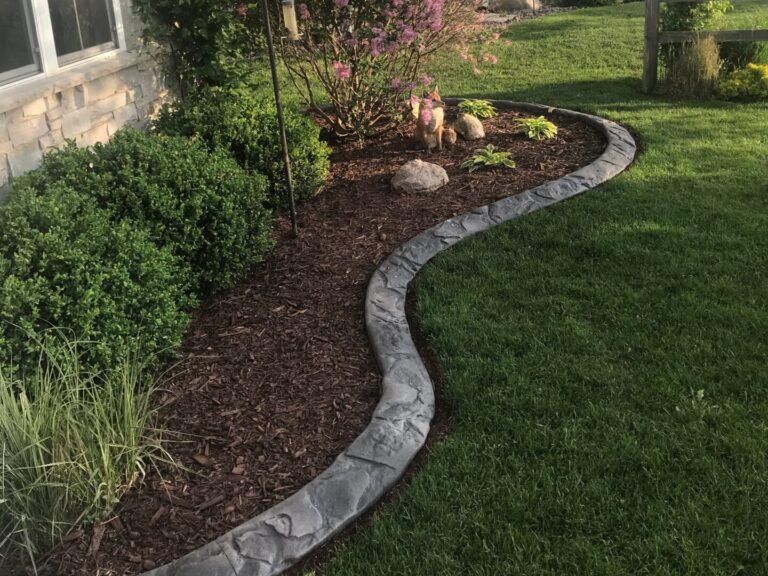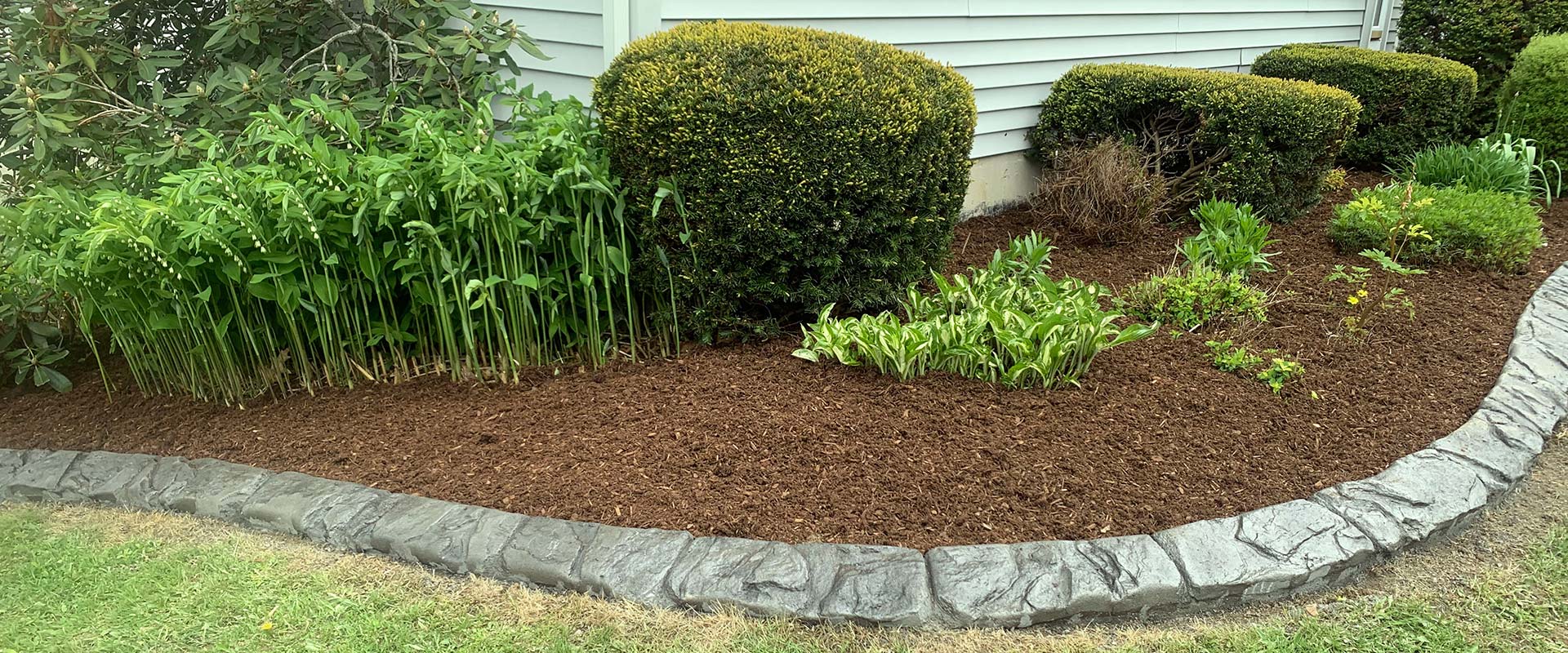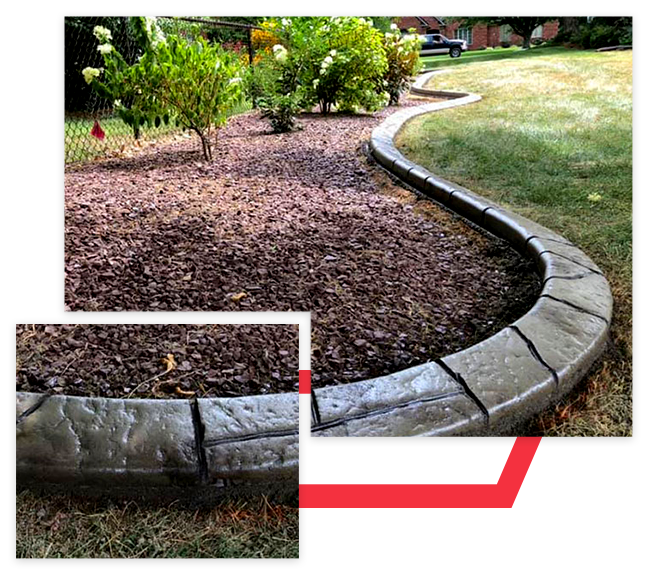Welcome to the world of decorative concrete landscape curbing! If you’re looking to enhance the beauty of your garden or landscape while maintaining functionality, you’ve come to the right place. Decorative concrete curbing is not just a trendy landscaping option; it’s a practical solution for defining and elevating your outdoor spaces. In this guide, I’ll share my personal experience, tips, and everything you need to know about decorative concrete landscape curbing.
What is Decorative Concrete Landscape Curbing?
Decorative concrete landscape curbing refers to the use of concrete to create borders and edging in landscaping projects. This type of curbing is designed to be both functional and aesthetically pleasing, offering a durable option to delineate flower beds, pathways, and driveways.
Why Choose Decorative Concrete?
Concrete is a versatile material that allows for endless design possibilities, making it a popular choice for landscaping. Here are a few reasons to consider decorative concrete curbing:
- Durability: Unlike wood or plastic, concrete can withstand harsh weather conditions, making it a long-lasting option.
- Customization: Concrete can be molded into various shapes, sizes, and colors to fit any design aesthetic.
- Low Maintenance: Decorative concrete requires minimal upkeep, saving you time and effort.
Types of Decorative Concrete Curbing
There are various types of decorative concrete curbing, each with its unique design and application. Here’s a quick overview:

1. Stamped Concrete Curbing
Stamped concrete curbing is designed to mimic natural materials like stone or brick. This type of curbing is ideal for homeowners looking for a rustic or classic look.
2. Colored Concrete Curbing
Color can be added to concrete during the mixing process or applied as a stain afterward. This option allows for a vibrantly colored border that can match or contrast with your garden blooms.

3. Textured Concrete Curbing
Textured concrete curbing offers a tactile experience, often resembling natural stone. It’s perfect for those seeking a more organic look in their landscaping.
Comparison of Curbing Types
| Type | Appearance | Durability | Cost | Maintenance |
|---|---|---|---|---|
| Stamped Concrete | Natural stone/brick look | Very Durable | Moderate | Low |
| Colored Concrete | Vibrant colors | Highly Durable | Moderate | Low |
| Textured Concrete | Organic, rustic | Very Durable | Higher | Low |

Benefits of Decorative Concrete Curbing
Decorative concrete curbing offers several benefits for homeowners. Let’s delve deeper into the pros and cons:
Pros
- Enhanced Aesthetics: Curbs add visual interest and structure to your landscape.
- Functionality: They help prevent soil erosion and contain mulch and gravel.
- Increased Property Value: Well-designed landscaping can enhance your home’s curb appeal.
- Eco-Friendly: Concrete is recyclable, and with eco-friendly options, it’s a sustainable choice.

Cons
- Initial Cost: The upfront cost can be higher than traditional edging options.
- Cracking: Though durable, concrete can crack over time if not properly installed or maintained.
- Limited Flexibility: Once set, changing the layout can be tedious and costly.
How to Install Decorative Concrete Curbing
Installation of decorative concrete curbing can be a DIY project, but it’s essential to follow specific steps for the best results.

Materials Needed
- Concrete mix
- Rebar or wire mesh (for added strength)
- Form boards
- Shovel and rake
- Concrete tools (trowel, edger, etc.)
- Release agent (for stamped curbing)
Step-by-Step Installation Guide
Step 1: Planning
Determine the layout for your curbing. Use stakes and string to outline the design.

Step 2: Preparing the Site
Clear the designated area of grass, plants, and debris. Ensure the ground is level.
Step 3: Setting Up Forms
Install your form boards according to your layout. Use stakes to hold them in place.

Step 4: Mixing Concrete
Prepare your concrete according to the manufacturer’s instructions. Aim for a consistent, workable mix.
Step 5: Pouring Concrete
Pour the concrete into the forms, filling them evenly. Use a trowel to smooth the surface.
Step 6: Texturing or Stamping
If opting for a stamped finish, apply a release agent and press stamps into the wet concrete.
Step 7: Curing
Allow the concrete to cure for at least 24 hours before removing the forms. Full strength may take up to 28 days.
Maintenance Tips for Decorative Concrete Curbing
Once your decorative concrete curbing is in place, proper maintenance will ensure its longevity.
1. Regular Cleaning
Use a broom or leaf blower to keep debris off the surface. A pressure washer can be used occasionally for deeper cleaning.
2. Sealing
Consider sealing your concrete every few years to protect it from stains and moisture.
3. Addressing Cracks
Inspect for cracks regularly and repair them promptly with a concrete patching compound.
Cost Considerations
The cost of decorative concrete curbing can vary based on several factors, including:
- Materials: The price of concrete and any additives or colorants.
- Size: The linear footage of the curbing you wish to install.
- Labor: If hiring professionals, labor costs can significantly affect the overall price.
On average, homeowners can expect to pay between $5 to $15 per linear foot, depending on the complexity and customizations involved.
Frequently Asked Questions (FAQs)
Q1: How long does decorative concrete curbing last?
A: With proper installation and maintenance, decorative concrete curbing can last 25 years or more.
Q2: Can I install decorative concrete curbing myself?
A: Yes, with the right tools and preparation, DIY installation is possible. However, professional installation is recommended for complex designs.
Q3: What colors can be used for decorative concrete curbing?
A: Almost any color can be achieved, as dyes and stains are available. It’s best to choose colors that complement your landscape.
Q4: Is decorative concrete curbing eco-friendly?
A: Yes, it can be eco-friendly. Many manufacturers offer recycled materials, and concrete itself is recyclable.
Q5: How do I repair cracked concrete curbing?
A: Cracks can be repaired using concrete patching compounds. Clean the crack and use a trowel to fill it, then smooth the surface.
Conclusion
Decorative concrete landscape curbing is an excellent way to elevate the aesthetic appeal and functionality of your outdoor spaces. Whether you’re looking for a simple border or an ornate design, the versatility of concrete allows for endless possibilities. Remember to weigh the pros and cons and consider your maintenance options for lasting beauty. I hope this guide provides you with all the information you need to make an informed decision for your landscaping project. Happy curbing!